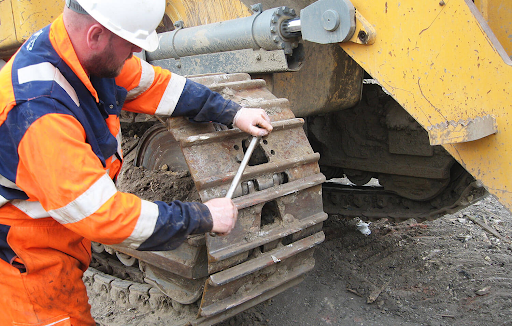When it comes to vehicle maintenance, most car owners tend to focus on the engine, brakes, and tires, often neglecting an equally critical aspect: the undercarriage. The undercarriage of a vehicle is vital for stability, safety, and overall performance. It encompasses all components beneath the vehicle, including the frame, suspension, exhaust system, and more. Understanding the importance of undercarriage repairs can not only prolong the life of your vehicle but also ensure your safety on the road.
The Importance of the Undercarriage
The undercarriage plays a crucial role in a vehicle’s structural integrity and handling characteristics. It absorbs shocks from uneven road surfaces, supports the weight of the vehicle, and provides a stable platform for various systems. A well-maintained undercarriage can enhance ride comfort, improve fuel efficiency, and reduce the risk of breakdowns. Conversely, neglecting undercarriage repairs can lead to severe issues such as misalignment, excessive tire wear, and compromised safety.
Common Issues Affecting the Undercarriage
Several factors can contribute to the deterioration of a vehicle’s undercarriage:
- Corrosion: Exposure to moisture, road salt, and chemicals can lead to rust and corrosion. This is particularly problematic in regions with harsh winters or heavy rainfall.
- Impact Damage: Potholes, debris, and uneven surfaces can cause dents or cracks in the undercarriage components, affecting their functionality.
- Wear and Tear: Over time, components such as the suspension system, exhaust system, and frame can experience wear due to regular use. This wear can lead to decreased performance and increased risk of failure.
- Poor Maintenance: Neglecting regular inspections and maintenance can allow minor issues to escalate into major problems, requiring more extensive undercarriage repairs.
Signs Your Undercarriage Needs Attention
Being proactive about your vehicle’s maintenance can save you time and money. Here are some signs that may indicate it’s time for undercarriage repairs:
- Unusual Noises: Hearing clunking or rattling noises while driving may suggest loose or damaged components.
- Poor Handling: If your vehicle feels unstable or pulls to one side, it could indicate suspension issues or misalignment.
- Visible Damage: Regularly inspect your vehicle’s undercarriage for signs of rust, cracks, or dents.
- Fluid Leaks: Any leaks under your vehicle, particularly oil or transmission fluid, should be investigated promptly, as they could point to a more significant problem.
Conducting Routine Inspections
Regular inspections are essential for maintaining your vehicle’s undercarriage. Here are some tips for effective inspections:
- Visual Inspection: Periodically check the undercarriage for visible signs of damage, rust, or corrosion. Look for any loose components or leaks.
- Professional Inspection: Schedule regular maintenance checks with a qualified mechanic who can conduct a thorough inspection of the undercarriage. They can identify potential issues that may not be visible to the untrained eye.
- Listen for Sounds: Pay attention to any unusual noises while driving. If you hear clunking or grinding, it’s essential to have your undercarriage inspected.
The Repair Process
When it comes to undercarriage repairs, it’s crucial to follow a systematic approach:
Diagnosis
The first step is to diagnose the issue accurately. A qualified mechanic will conduct a comprehensive inspection, using diagnostic tools to identify the root cause of any problems.
Repair Options
Depending on the extent of the damage, various repair options may be available:
- Rust Treatment: If corrosion is present, it may be possible to treat it with rust inhibitors, sandblasting, or, in severe cases, replacing affected components.
- Component Replacement: Damaged parts, such as control arms or suspension components, may need to be replaced entirely to restore proper function.
- Alignment and Balancing: If the vehicle is misaligned, adjusting the alignment and balancing the tires can improve handling and prevent premature wear.
Professional Assistance
While some minor repairs can be performed by skilled DIY enthusiasts, it’s often best to seek professional assistance for undercarriage repairs. Experienced mechanics possess the necessary tools, expertise, and knowledge to ensure repairs are performed correctly and safely.
Preventative Maintenance Tips
To avoid costly undercarriage repairs in the future, consider these preventative measures:
- Regular Cleaning: Keep the undercarriage clean to prevent the buildup of dirt, grime, and corrosive materials. A high-pressure wash can help remove contaminants.
- Protective Coatings: Consider applying a protective coating to the undercarriage to safeguard against rust and corrosion.
- Routine Inspections: Schedule regular maintenance checks to catch potential issues early.
Conclusion
Maintaining your vehicle’s undercarriage is essential for safety, performance, and longevity. By understanding the importance of undercarriage repairs and conducting regular inspections, you can ensure your vehicle remains grounded and safe on the road. Prioritizing these repairs not only enhances your driving experience but also contributes to the overall reliability of your vehicle. Remember, when in doubt, consult a professional mechanic to keep your vehicle in optimal condition.

